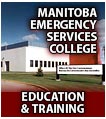
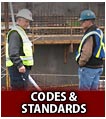
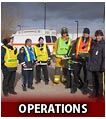
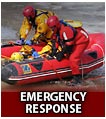

Home > Municipal Support > FireSmart


Wildfire Community Preparedness Day - Saturday, May 4, 2019
Accomplish something great and organize neighbours, friends or a community group and participate in a project that reduces your wildfire risk.
APPLY FOR A CHANCE TO WIN $500 FOR YOUR GROUP NEIGHBOURHOOD OR COMMUNITY!
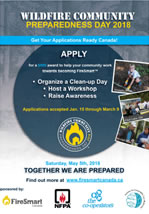
Commit a couple of hours, or the entire day and join others throughout the nation making communities a safer place to live on Saturday, May 4, 2019. Challenge your neighbourhood, friends, family members, co-workers, community service group, youth organization, club or any eligible group to create a project and accomplish something great together!
Efforts will raise community wildfire awareness, help protect homes and help neighbourhoods and entire communities work towards becoming FireSmart.
In collaboration with the National Fire Protection Association (NFPA), the Institute for Catastrophic Loss Reduction (ICLR), and The Co-operators, FireSmart Canada is pleased to present the second annual National Wildfire Community Preparedness Day on May 4, 2019.
During Wildfire Community Preparedness Day, communities across Canada are encouraged to participate in local mitigation projects to help reduce the risk of wildfire damage to their homes and neighbourhoods.
Is your community working towards to becoming nationally recognized through the FireSmart Canada Community Recognition Program? Use this day as your FireSmart Day and enter to win $500 for use towards it!
Visit www.firesmartcanada.ca/firesmart-communities or email general@firesmartcanada.ca to find out more about the FireSmart Canada Community Recognition Program
HERE'S SOME PROJECT IDEAS TO GET YOU THINKING! COME UP WITH IDEAS THAT WILL WORK BEST FOR YOURCOMMUNITY!
|
FOLLOW FireSmart Canada on Facebook and @FireSmart on Twitter
FireSmart Resources

FireSmart - Homeowner's Assessment - FireSmart Begins at Home. Assess your risk from wildfire.
FireSmart - Homeowner's Manual - FireSmart Begins at Home. By choosing to extend our lifestyles and
communities further into forested areas, we
become more exposed to the danger of wildfire.
Living where wildfires can occur puts your
home at risk, but it is possible to live safely
with this natural event. The recommendations
in this manual will reduce the risk of wildfire
to your home and neighbourhood and
help firefighters to defend your home.
Conservation and Water Stewardship - Wildfire Program Restrictions - During the wildfire season (April 1st – November 15th), there may be times when the increased risk of wildfire, due to current wildfire activity, dry conditions, forecasted weather, and/or an increased risk of lightning caused wildfires...(open PDF)
FireSmart Your Farm - Protect Your Operation From Wildfires (PDF)
A Guide to Landscaping Practices that Protect Your Home From Wildfire (PDF)
FireSmart Manual (PDF)
Wildfire Evacuation Brochure (PDF)
Values-at risk (VAR) inventory in the Whiteshell Provincial Park Information Bulletin (PDF)
Values At Risk Profile Tool
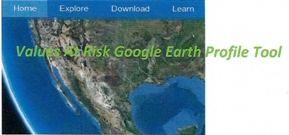 This Values At Risk Profile Tool enables and assists emergency personnel identify critical Values At Risk in an emergency.
This Values At Risk Profile Tool enables and assists emergency personnel identify critical Values At Risk in an emergency.
Membership login and password are required. Please contact Jeff Erwin for more information.
Click here to enter Values at Risk Google Earth Profile Tool.
The FireSmart program provides information to give communities and individuals across Manitoba and Canada the information and tools they need to confront interface fire protection issues. Forested and wildland areas are highly desirable places to live. What makes them so attractive, however, also makes them hazardous. While vegetation is an amenity for residents, it is nothing more than a source of fuel for a fire. The Office of the Fire Commissioner’s (OFC) goal is to reduce personal and property losses that result from wildfires in the Wildland Urban Interface. To achieve this, the OFC promotes awareness of fire safety and prevention.
Wildland Urban Interface areas exist wherever homes and businesses are built among trees and other combustible vegetation. Simply put, Wildland Urban Interface is where the urban lifestyle meets the forested area.
Over many decades fuels have accumulated in forested areas of the province. Fire is a natural process in the environment. Disturbance intervals are times when a wildfire would be expected to burn in an area in a normal natural cycle but is stopped due to fire suppression resources. As disturbance intervals increase over many decades, forest fuels have accumulated; forest health has declined while the potential risk of wildfires continues to grow. As we have become increasingly successful at suppressing forest fires to protect our timber resources and communities, we are inadvertently altering the forest landscape.
However, you are not helpless against the threat of wildfire. You can increase your level of awareness, increase your level of preparation and reduce your risk with respect to wildfire in the Wildland Urban Interface.
There are two types of fire that you should be aware of; the fire that threatens your property from an outside source, and secondly, the fire which originates from your activities. Wildfire from either source can be extremely destructive.
Be FireSmart
The preventative work done now by you and your neighbors reduces fire hazard and protects your investment and the forest against wildfire.
How Prepared Are You?
Managing the vegetation in and around your property to lessen the risk of wildfire. This can be accomplished by thinning and pruning, removing volatile trees such as spruce and planting fire-resistant species such as aspen (species conversion), the construction of fuel breaks, or general cleanup in and around your property.
Fuel management is the process of modifying forest fuels. Reduction of fire hazard in fuels capable of supporting fast-spreading, high intensity fires often requires significant intervention – removal, reduction, or conversion of on-site fuels. By reducing fuels in areas where the forest meets community development, fires will pose less threat to residents and will be safer for fire fighting crews.
Your fire prevention awareness is especially important in rural settings as response times by fire agencies can be extended due to geographics involved.
It is not a question of whether or not interface fire losses will occur in Manitoba but a question of when and where they will occur.
Fuel management initiatives can help reduce the danger of devastating wildfire losses. To assist home and business owners in fire prevention and protection check out Manitoba’s Home Owner’s FireSmart Manual and the Wildfire Evacuation Brochure.